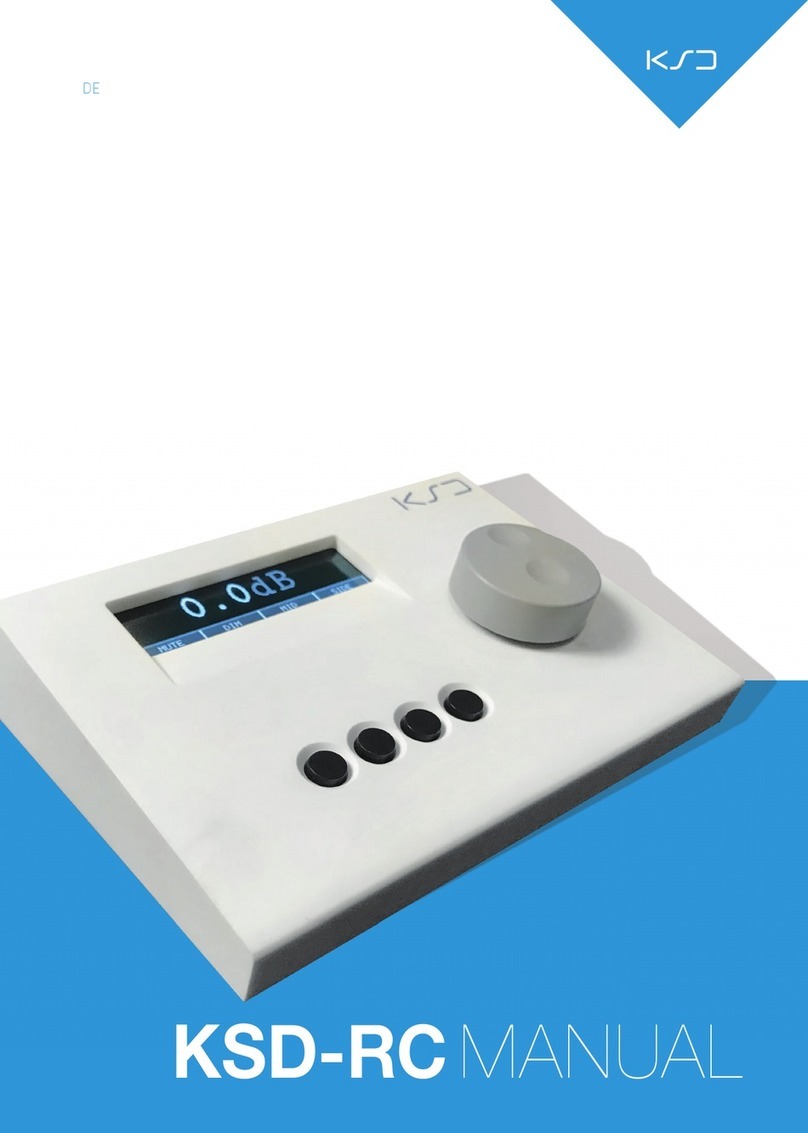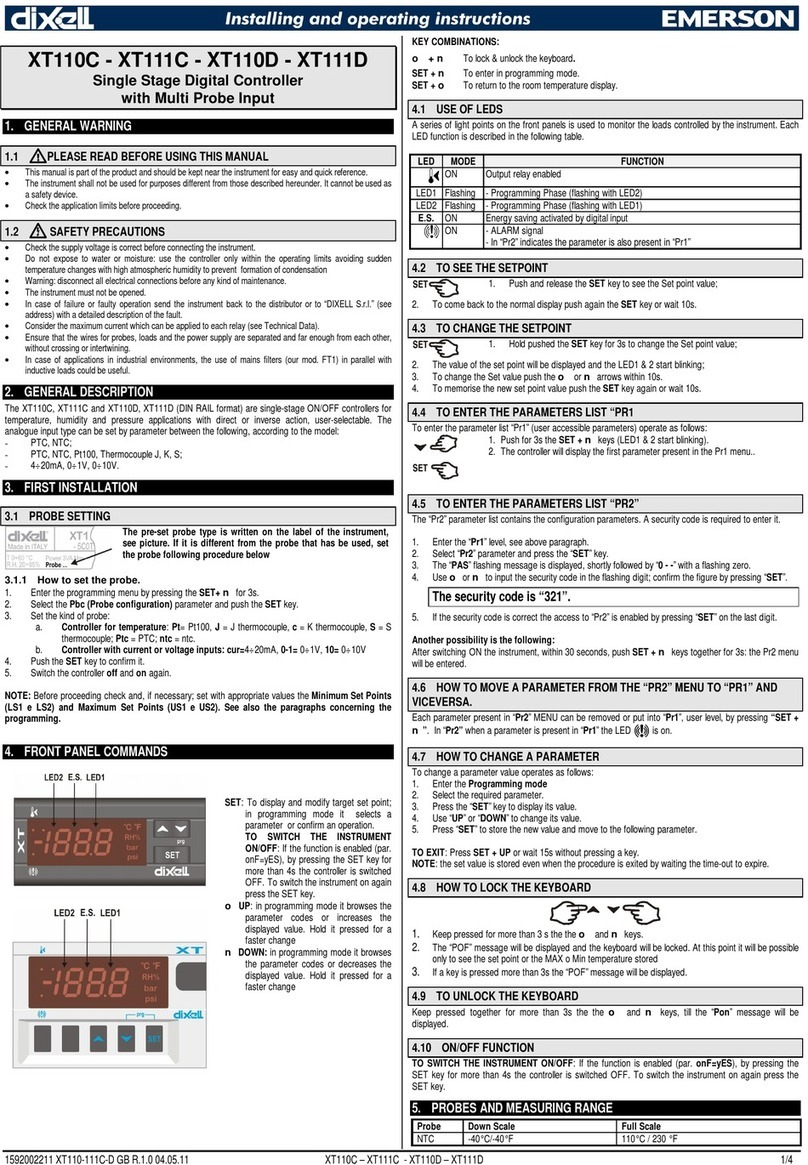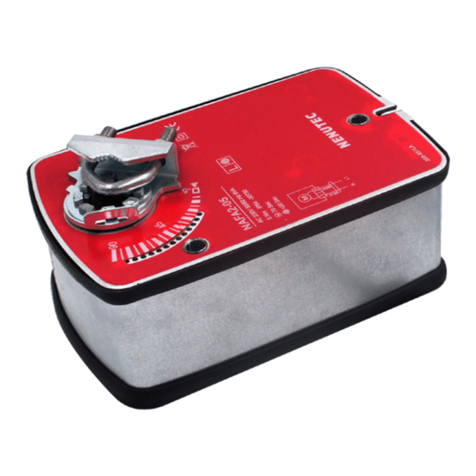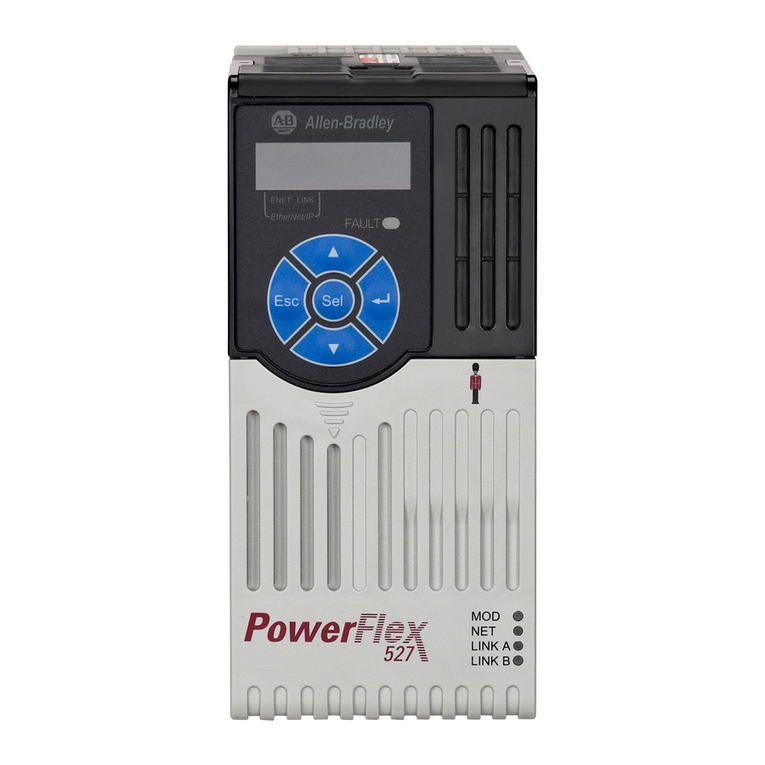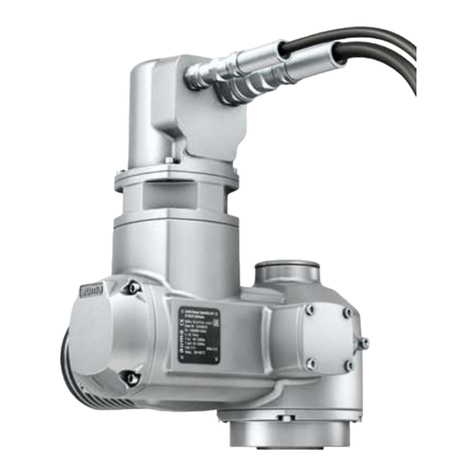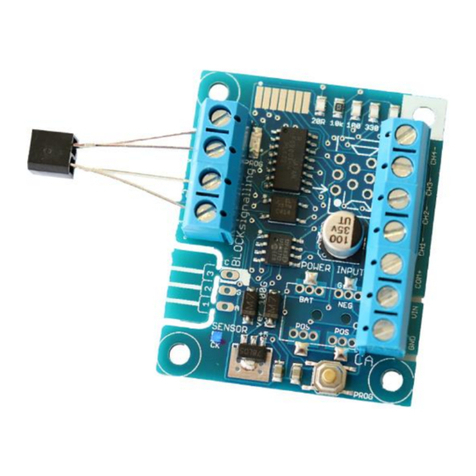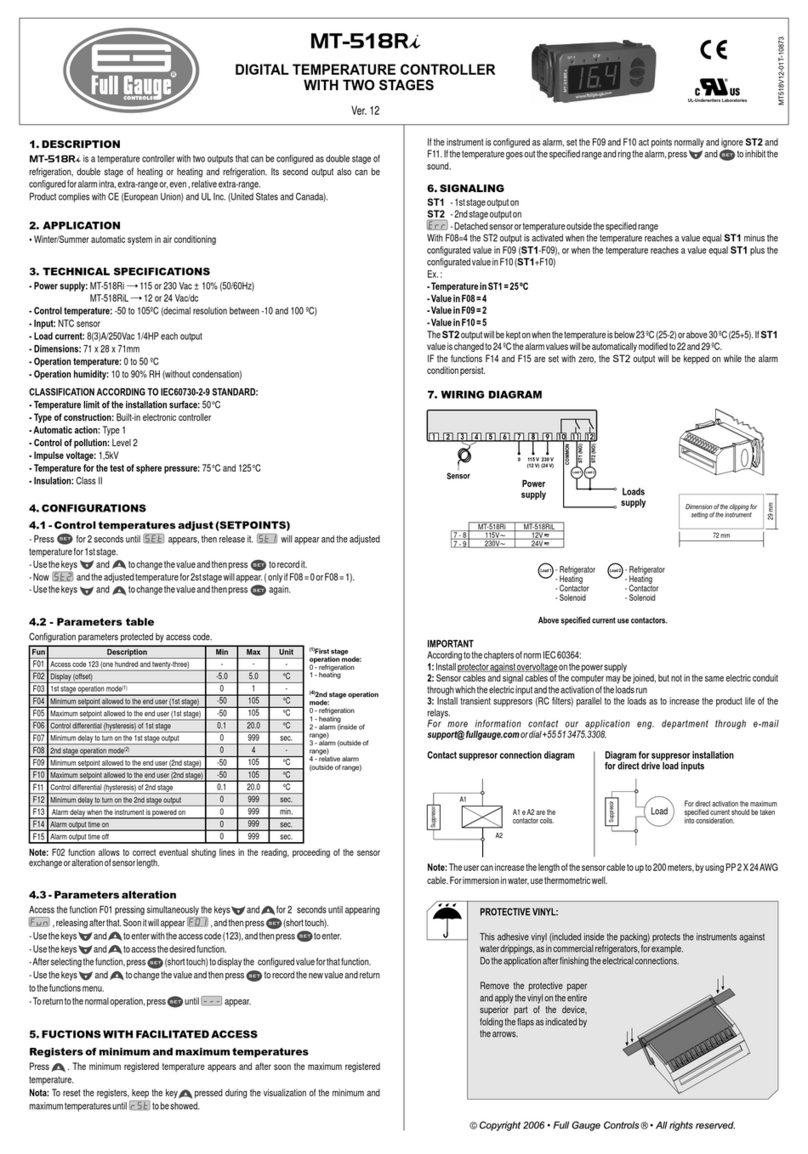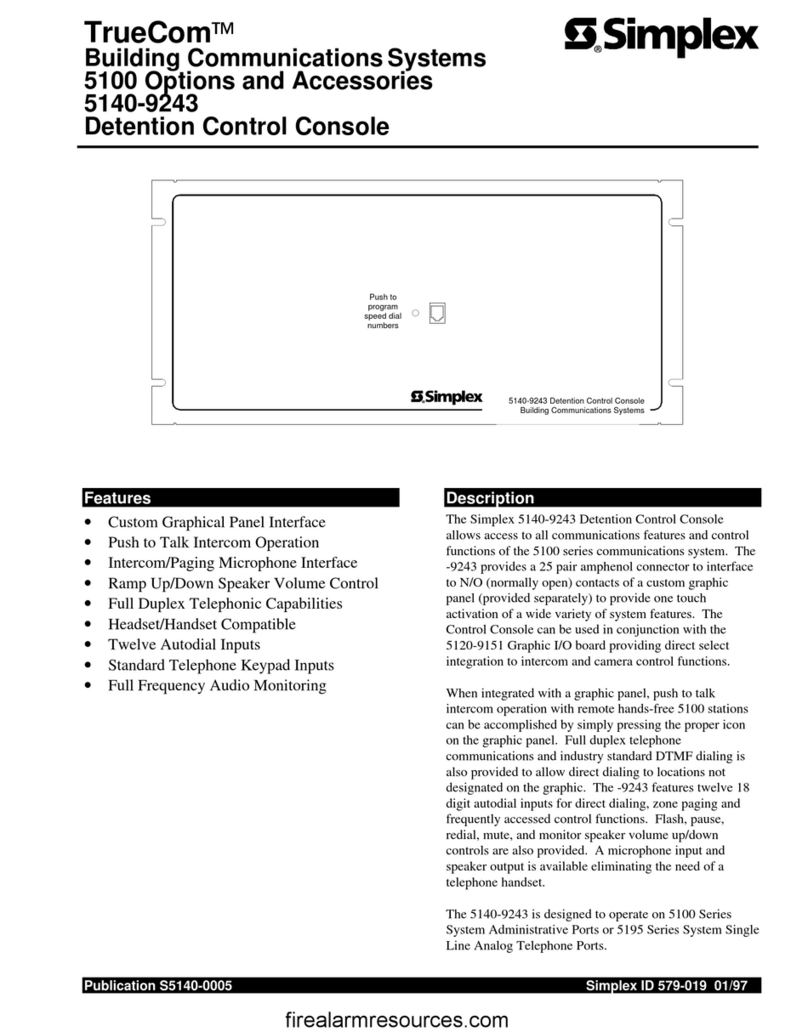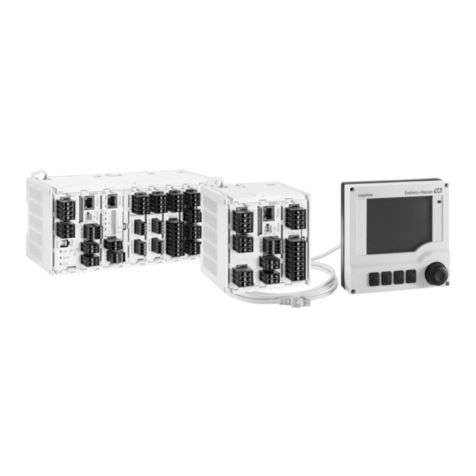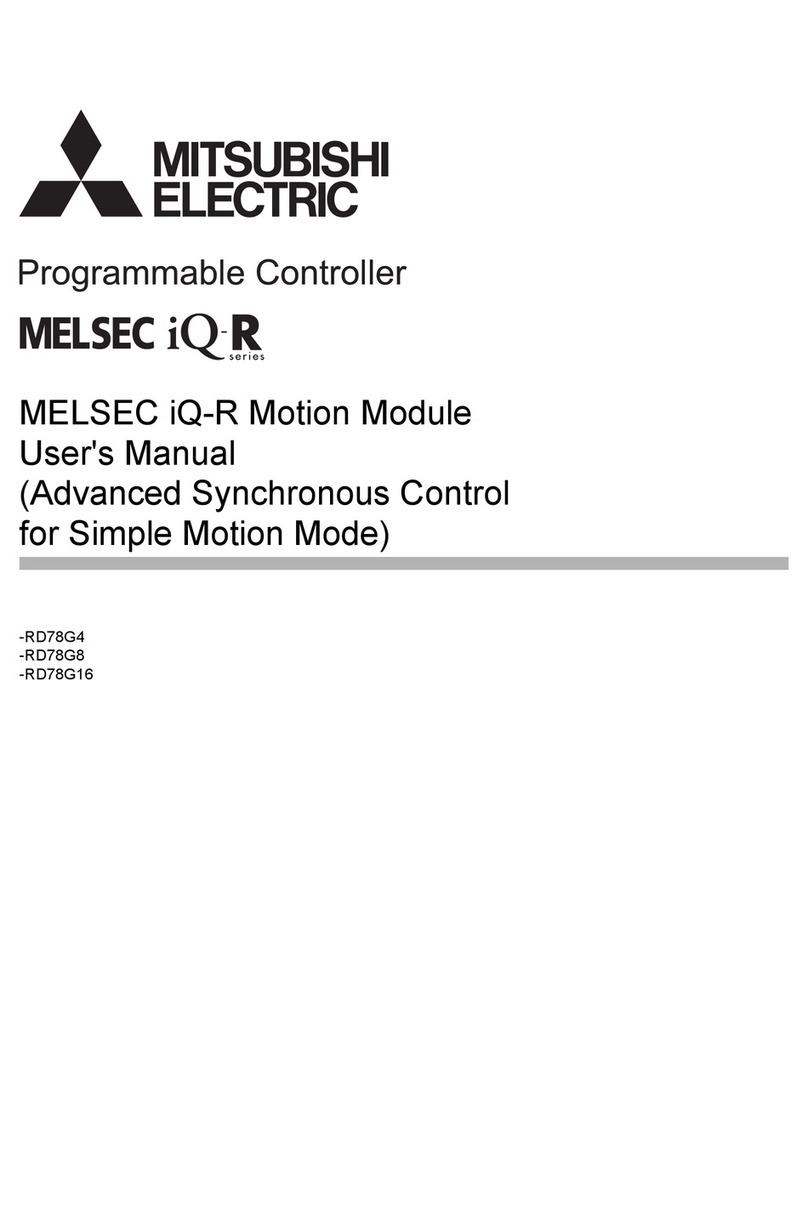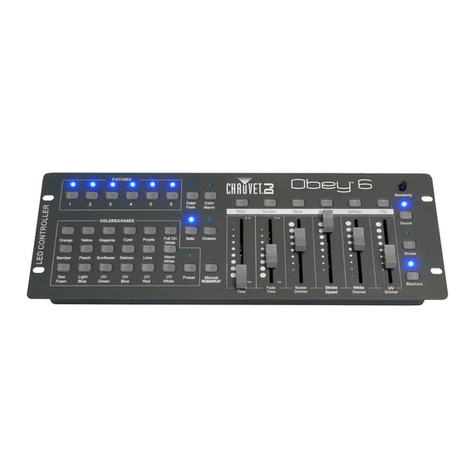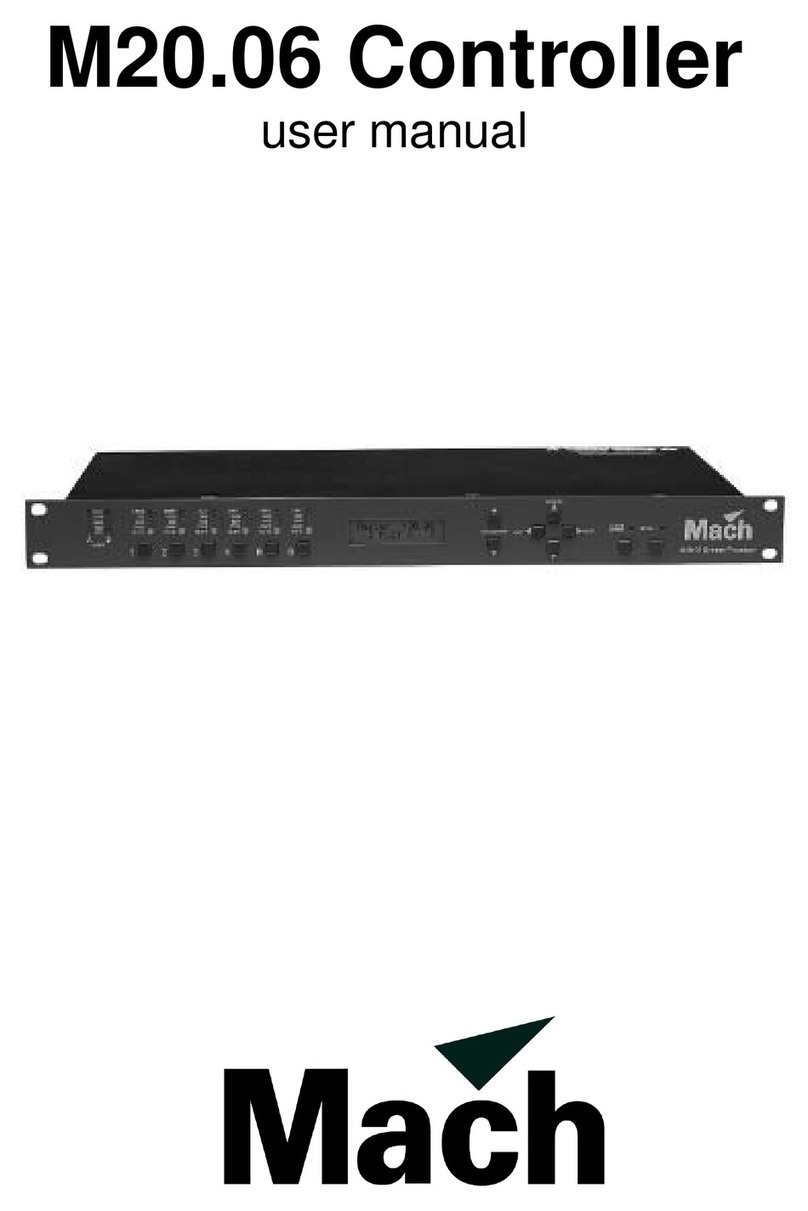KS DIGITAL MONTREUX User manual

MANUAL
MONTREUX

BEDIENUNGSANLEITUNG KSdigital-MONTREUX MONITOR-CONTROLLER
Die Montreux ist ein hocheffizientes Werkzeug zur Lautstärkeregelung und zum Routing des Abhörsignal.
Egal, ob die Quelle analog oder digital vorliegt, die Monitore analog oder digital angeschlossen werden,
die KSdigital Montreux erlaubt jedes professionelle Anschlussformat. Physikalisch werden die Quellen
und Lautsprecher mit der 19“ Controllereinheit per XLR-Anschluss verbunden. Dann wird auf der Front
des Controllers pro Kanal die Domain, analog oder digital, gewählt. Der Analogeingang hat eine Übersteu-
erungsfestigkeit bis 10dBV. Wählt man am Domainschalter ‚digital‘ aus, so muss die linke XLR-Buchse
mit dem digitalen Signal verbunden werden. Die erlaubte Signal-Samplerate liegt im Bereich von 32KHz
bis 192KHz. Es wird eine Wortbreite von 16Bit bis 24 Bit verarbeitet.
Die internen SRCs reclocken das anliegende Signal mittels interner Referenz-Clock auf eine HD-Samp-
lefrequenz von 96KHz. Die digitalen Ausgangssignale arbeiten dann in 96KHz ebenso wie die interne
DA-Wandler. So ist immer eine hochaufgelöste hochperformante Wiedergabe garantiert.
DIE KSdigital MONTREUX BESTEHT AUS ZWEI EINHEITEN:
1) der 19“ Controllereinheit mit den Ein- und Ausgangsbuchsen zum Anschluss der Quellen und Monitorpaare.
2)
die Remote-Einheit,die aufdem Arbeitstischbzw. Mischpultplatziert werdenkann undeine bequemenZugriff
auf alle Einstellungen bietet. Das elegante Tisch-Gehäuse wurde in Hinblick auf eine übersichtliche, intuitiv
bedienbare Anordnung der Tasten designt, die einen direkten Überblick über die geschalteten Kanäle und die
eingestellte Lautstärke erlauben. Der zentrale Lautstärkeregler erlaubt durch seine Größe eine besonders
sensible Einstellung der Lautstärke mit ‚analogem‘ Feel. Eine Markierung am Knopf zeigt auf einen Blick die
voreingestellte Lautstärke. Da es sich hierbei nicht um einen Encoder (Endlosregler) handelt, vermittelt dieser
eine direkt visuelle Kontrolle der Abhörlautstärke ohne den Umweg über Displays, Balkendiagramme oder
andere Anzeigen, völlig intuitiv! Genauso intuitiv bedienbar ist die Quellen- und Monitorausgangs-Wahl. Ein
Knopfdruck zur Aktivierung des Kanals und die Led in der Taste zeigt den aktuelle Zustand.
MONTREUX

DIE TASTEN:
IN 1..3: Aktiviert den entsprechenden Eingang und deaktiviert alle anderen.
SUB: Die SUB Taste aktiviert die Filterung des Signal am Ausgang 1..3 (hochpassgefiltert)
und sendet das passende Lowpass Signal an den Sub-Ausgangskanal. Diese Konfiguration
eignet sich um eine 2.1-Abhörsystem mit Mono-Subwoofer und Satellitten anzuschließen
bzw. zu simulieren.
OUT 1..3: Wahl des Lautsprecherpaares 1 bis 3.
HEAD: Mutet alle Lautsprecherpaare und gibt das Signal auf den Kopfhörerverstärker.
Die dazu passende Ausgangsbuchse ist an der Rückseite des Remote-Gehäuses.
DER KOPFHÖRERKANAL:
Eine Einbindung des Kopfhörers im Mischprozess macht nur dann Sinn, wenn dieser unkompliziert
schaltbar ist und pegelgleich zu den Monitoren. Ein Pegelsprung zum Abhörmonitor verschiebt sofort
das Klangbild und damit die Möglichkeit des Vergleichs. Wir haben bei der Entwicklung der Montreux
besonderen Wert auf die Klangqualität und Ausgangsleistung des Kopfhörerverstärkers gelegt, so dass
dieser ernsthaft in den Produktionsprozess eingebunden werden kann. Beim Drücken der HEAD-Taste
werden alle sonstigen Ausgänge gemutet. Die Anpassung der Lautstärke an die Monitore passiert mit
Hilfe der Offset-Gain-Einstellung. Die technischen Daten des Head-Phones-Amps sind ebenso hochwertig
und entsprechen den Werten des Controllers insgesamt in S/N und THD.
EINSTELLUNG DER OFFSET-GAINS:
Offset-Gains können sowohl auf die 3 Eingänge als auch auf die 4 Ausgänge
(3x Controller, 1x Headphone) angewendet werden.
DAZU IST FOLGENDES ZU TUN:
A. Gewünschten Kanal (Eingang/Ausgang) für ca. 2sec gedrückt halten => Kanal-Led fängt zu
Blinken, die Leds der unteren Reihe leuchten.
B. Mit Mono (-) / Side (+) lässt sich das Gain in 0,1 dB Schritten im Bereich von -24dB - +24dB
eistellen (bei gedrückte Taste läuft Gain stetig hoch /runter).
C. Mit der Dim Taste wird der Offsetgain des gewählten Kanals auf 0dB zurückgesetzt.
D. Mit Mute wird das Offsetmenu verlassen.
TECHNISCHE DATEN: KOPFHÖRER-LEISTUNGSDATEN:
DA 118dB S/N 8 Ohm => 1.57W
AD 110dB S/N 20 Ohm => 1.42W
100 Ohm => 0.5W
DA besser -103 dB THD+N 200 Ohm => 0.3W
AD besser -100 dB THD+N 600 Ohm => 100mW
HIGHPASS/LOWPASS-CROSSOVER-FREQUENZ:
12dB / Oct bei 80Hz mit einer Güte von 0.707
MONTREUX

OPERATING MANUAL KSdigital-MONTREUX – MONITOR-CONTROLLER
The Montreux is a highly efficient tool for controlling volume and routing of the signal. Irrespective of
whether a digital or analogue source, or whether the speakers are connected via a digital or analogue
jack, the KSdigital Montreux facilitates every professional connection format.
The physical connection between the source and speakers with the controller unit is made with an XLR
connection. Then, on the front of the controller the choice of domain per channel; whether analogue or
digital can be made. That’s all! The analogue input has an overload protection of up to 10dBV. If “digital”
is chosen as the domain, then the left-hand XLR-jack has to be connected to the digital signal. The per-
mitted range for the signal sampling rate lies from 32 KHz up to 192 KHz. A word-length from 16 Bit to
24 Bit can be processed.
The internal SRC’s recalibrate the signal being processed to an HD sample frequency of 96 KHz using an
internal reference clock. The digital output signal then operates at 96 KHz in the same way as the internal
D/A converter. In this way, a high resolution and high quality reproduction is guaranteed.
THE KSdigital MONTREUX COMPRISES OF TWO UNITS:
1) The 19” controller unit with in- and output jacks in order to connect it with the source and a pair of
speakers, and
2)
the remote unit which can be placed for example on work-top in order to facilitate a comfortable control of
all variables. The elegant desktop cabinet has been designed with an eye for an intuitive and simple operation
of the controls, which permit a direct overview of the channels in operation and corresponding volumes. Due
to its size, the central volume control facilitates a very fine adjustment of the volume with an analogue feel to it.
A mark on the control-knob lets one see the actual volume very easily. Since this is not an encoder, it permits
a direct visual control of the listening volume completely intuitively, without going through displays, bar-charts
or other screens.
MONTREUX

THE BUTTONS:
IN 1..3: Activates the corresponding input and deactivates all the others.
SUB: Pressing the SUB button routes the signal to the high pass filter on the outputs 1..3
and the SUB output channel is then occupied with the correspondingly filtered low-pass signal.
This configuration is suitable for connection to a 2.1 sound system, or in order to simulate one.
OUT 1..3: Choice of loudspeaker pairs, 1 – 3.
HEAD: Mutes all loudspeaker pairs and routes the signal to the headphone amplifier.
The corresponding output jack is situated at the rear of the remote unit.
HE HEADPHONE CHANNEL:
Connecting the headphone to the mixing process only makes sense if this can be switched without com-
plication and at a similar volume to the monitors. A major difference in the volume between headphone
and monitors would result in a displacement of the acoustic pattern and with it lose the possibility of a
comparison. During the development of the Montreux, we kept a close eye on the quality of the sound and
output performance of the headphone amplifier so that they can be included in the production process.
By pressing the HEAD button, all other outputs are muted. The adjustment of the volume at the monitors
is then achieved with the help of the Offset-Gain control. The technical specifications of the headphone
amplifier are of equally high quality and equivalent to the quality of the controller in both S/N and THD.
ADJUSTMENT OF THE OFFSET-GAIN:
Offset-Gain can be applied to the three inputs as well as the 4 outputs
(3x Controller, 1x Headphone).
PLEASE FOLLOW THESE INSTRUCTIONS:
A. Press the chosen channel (input / output) for approx. 2 secs. The channel LED will begin to
blink, and the LED’s in the bottom row will light up.
B. The Mono (-) and Side (+) buttons change the Gain in 0.1dB steps within the range of -24dB
to +24dB. Keeping the buttons pressed will change the gain continuously until released.
C. The Dim button will return the gain of the selected channel back to 0dB.
D. The Mute button will exit the Offset menu.
TECHNICAL DATA: HEADPHONE PERFORMANCE:
DA 118dB S/N 8 Ohm => 1.57W
AD 110dB S/N 20 Ohm => 1.42W
100 Ohm => 0.5W
DA better -103 dB THD+N 200 Ohm => 0.3W
AD better -100 dB THD+N 600 Ohm => 100mW
HIGHPASS/LOWPASS CROSSOVER FREQUENCIES
12dB / Oct at 80Hz with a quality factor of 0.707
MONTREUX

Montreux
KSdigital GmbH
Altenkesselerstr. 17/D1, D-66115 Saarbrücken,
Table of contents
Languages:
Other KS DIGITAL Controllers manuals
